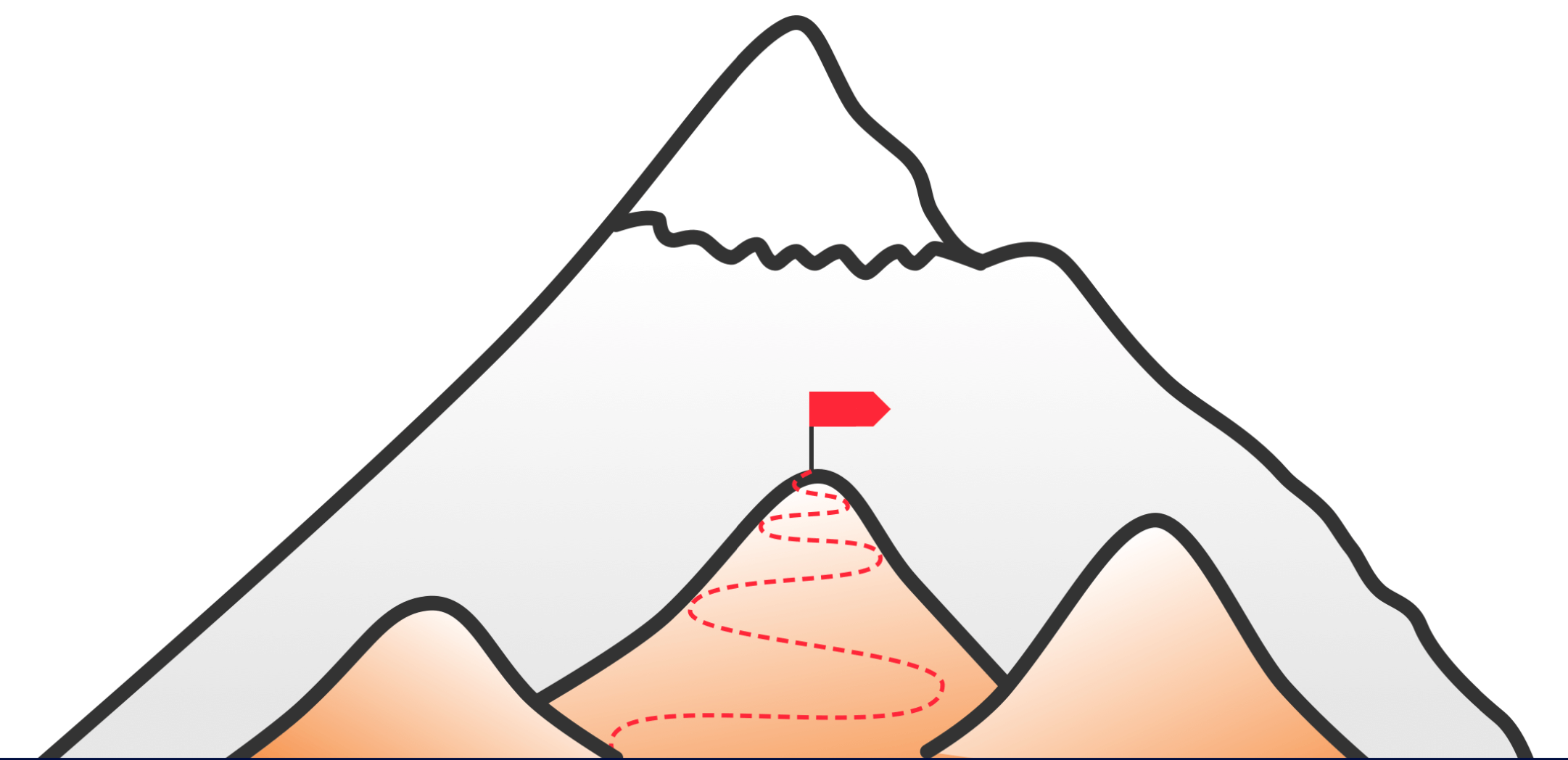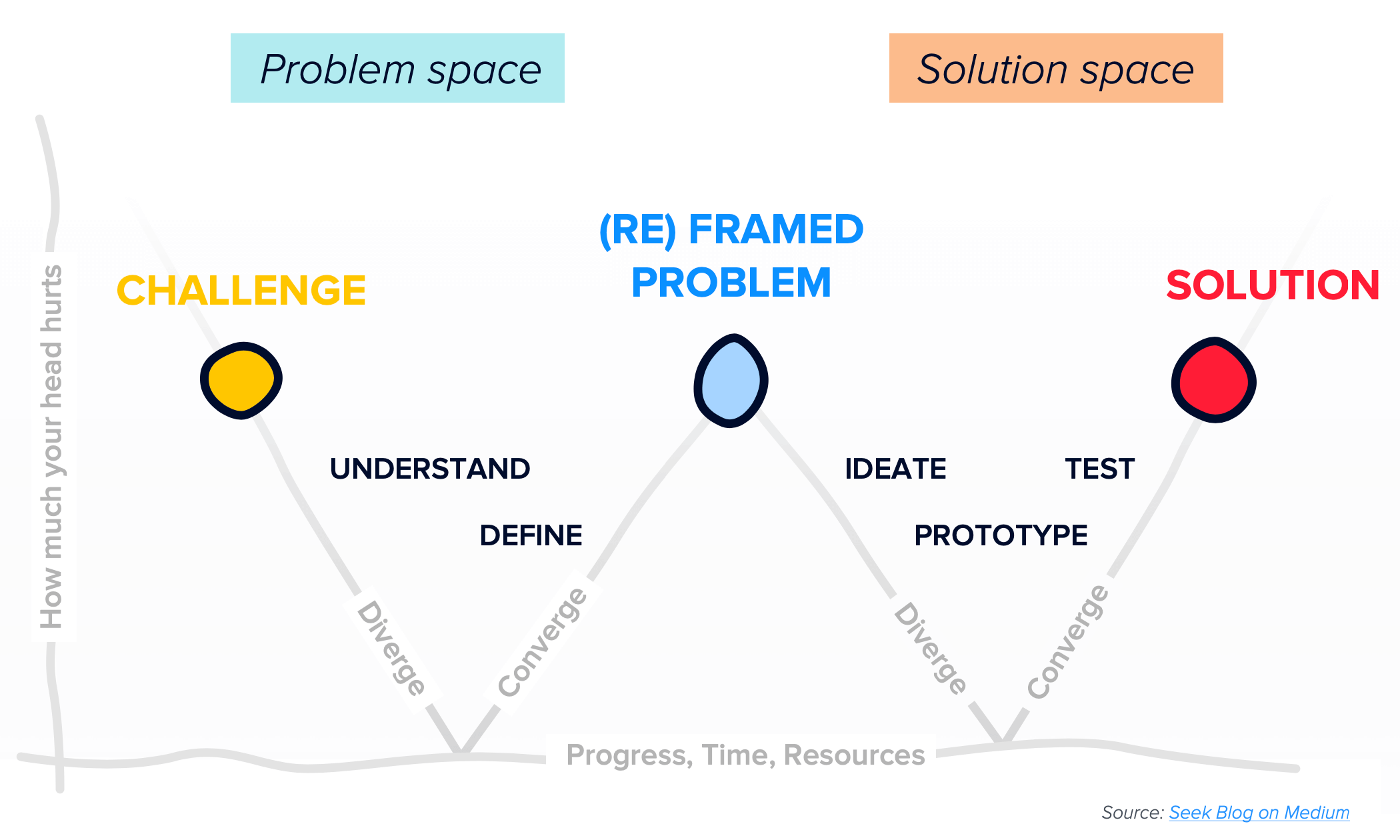Everything you need to know about product discovery

Why risk building the wrong products if you can first validate your understanding of existing user needs and ideal solutions? Set yourself up for success by incorporating product discovery into your product management process.
In our new ebook The essential guide to product discovery, we aim to:
- Place product discovery in context: Why is it so important right now?
- Provide you with a step-by-step guide for conducting better product discovery
- Highlight 3 common product discovery mistakes to avoid.
Here’s what’s in store…
The how and the what of product development
What’s the point of optimizing the delivery of software if we’re not delivering the right thing?
Until recently, the product and business world was laser-focused on building products the right way (the how of product development) rather than figuring out the right products to build in the first place (the what of product development).
Over the years, what frameworks have advanced, but the tools to support them still lag behind. That means that product managers have managed the complex process of deciding what to build next using hacked-together spreadsheets, shared docs, task management tools, and systems for managing engineering, sales, marketing, and support data.
That’s a shame, because it means teams have collectively wasted hundreds of thousands of hours and billions of dollars developing underutilized features and products that failed to live up to their potential.
So, how might we go about deciding what to build at the same time as we’re optimizing how we build our products? Enter product discovery.

The age of product discovery
Users have complex needs with subtleties they may not even be aware of. Product managers who don’t take the time to uncover them are making assumptions or encouraging developers to make assumptions.
In either event, they’re likely to get key details wrong, which threatens to waste the team’s time and degrades the quality of the product. Building software, even efficiently, is an awfully expensive, frustrating, and suboptimal way of discovering what users really need.
In short, why risk building the wrong feature if you can first validate your understanding of the existing need and the ideal solution?
By introducing product discovery to the product management process, product teams reduce this risk and set themselves up for success.
A step-by-step guide for conducting product discovery
Product discovery is about promoting an environment of learning so you can improve your product incrementally and consistently.
The Double Diamond is a popular approach for conducting product discovery that we use ourselves at productboard.
In The essential guide to product discovery, we break down each piece step-by-step and provide a real-life example from a productboard discovery session.
3 mistakes to avoid with product discovery
There are 3 common mistakes we often see in teams incorporating product discovery into their process. In our ebook, we cover each in detail along with tips on how to avoid them.
1. Jumping to solutions before nailing down real user problems
The average product team spends 80% of their time in the solution space and 20% in the problem space. Ideally, that time should be split 50-50.
2. Underestimating the importance of working with stakeholders
ll stakeholders should have their needs considered during the discovery process so when it’s time for delivery, they know why their request has been included (or not). This helps the product team earn buy-in from day one and leads to better products that incorporate all points of views.
3. Not involving engineers early enough
Too often, engineers are only brought into the fold during the delivery phase. As we elaborate on in our ebook, this is problematic for a number of reasons.
“If you’re just using your engineers to code, you’re only getting about half their value.”
Start building a regular product discovery practice
Product discovery might feel intimidating, but it doesn’t have to be. Keep in mind that for many teams, adopting discovery is an ongoing process, so getting started is what matters most. You’ll have plenty of opportunities to iterate and improve over time, but only if you take those first steps.





